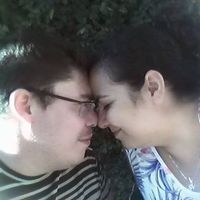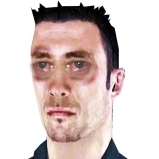Leaderboard
Popular Content
Showing content with the highest reputation on 07/23/2019 in all areas
-
While doing work for Montana mod, I accidentally found the fix for patrolling units not obeying stoplights. Due to my current internet situation, I do not have a video demonstration. The value that made this work is v.SetTerrain(TERRAIN_TRAFFIC); And to reset it back to normal: v.SetTerrain(TERRAIN_CAR); These values can be implemented to ANY mod. Here is an example of the code implemented into the LA mod patrol script. This example will only work in an unedited copy of the LA mod. This example will not function with other mods or submods.1 point
-
Despite the long time away, I am proud to present all the emergency vehicles of São Paulo Modification. Ambulance, Fire Department, Police Department and Technical department. We will soon post images of the new map.1 point
-
Hi, I have made a new tutorial for the interested people. The tutorial is about creating 3D-models. A 'high polygon' 3D model is used as an example in this tutorial. That's not illegal in any way, because that model is used as example only. The purpose of this tutorial is explaining the most important functions in Zmodeler 2, so that you can make a start with 3D-modeling. The tutorial is large, so read everything very careful. Don't go further until you've understand it. I've tried to explain everything as easy as possible. But some parts were very hard to explain. Zmodeler 2 website: [url="http://www.zmodeler2.com"]www.zmodeler2.com[/url] [b]3D-Modeling with Zmodeler 2 (v2.0.7.802)[/b] Difficulty: Moderate Programs used: Zmodeler 2 (v2.0.7.802) Registered Version This tutorial will teach you how to create an entirely new model based on a high polygon model. Starting with this type of 3D-modeling, you will learn the basics of using Zmodeler 2 quickly. The example used in this tutorial is a high and low polygon Volvo XC90. The high polygon model is used as an example only. No parts or whatsoever are used/copied onto the new model. The main purpose of this tutorial is to explain you how to use the tools for 3D-modeling in Zmodeler 2. ========================== WHAT IS A 3D MODEL? A 3D model is a representation of a three-dimensional object. High polygon models are more detailed than lower polygon models, but high polygon models can cause lag in Emergency 3 and 4 and are more difficult to make. Because Emergency 3 and 4 are using top view will never see the small details of high polygon models. That's why low polygon models are good enough. Two screenshots of a high and low polygon Volvo XC90 below: [url="http://www.emergency-planet.com/tutorials/3dmodel_01.jpg"]Image 01: Volvo XC90, high polygon model (40.000 polygons)[/url] [url="http://www.emergency-planet.com/tutorials/3dmodel_02.jpg"]Image 02: Volvo XC90, low polygon model (800 polygons)[/url] ========================== TIPS BEFORE STARTING: The best way to create a new vehicle is to model one of the sides of the vehicle first. When you are finished you copy and mirror the side, so your vehicle will be symmetrical. [url="http://www.emergency-planet.com/tutorials/3dmodel_03.jpg"]Image 03: One side (half) of a model[/url] Wheels and doors are seperate models and detached from the main model. You can view all models in the Scene nodes browser window. You can hide or show models there. To activate the Scene nodes browser in case you don't see it: Go to View -> Floaters and enable Scene Nodes Browser. A very important thing is to learn to work with different views. The most important views are Right/Left, Front, Top and Perspective view. [url="http://www.emergency-planet.com/tutorials/3dmodel_04.jpg"]Image 04: Scene nodes brower[/url] [url="http://www.emergency-planet.com/tutorials/3dmodel_05.jpg"]Image 05: Active Scene nodes browser[/url] ========================== MODES AND AXES: To change positions of your polygons, you need to work with X, Y or Z axes. On the top of your screen there are three buttons (X, Y, and Z): - When you enable X, you can move your object on the X-axis (horizontal line, left or right) only. - When you enable Y, you can move your object on the Y-axis (vertical line, up or down) only. - When you enable X and Y both, you can move your object to all directions except Z-axis (depth). - When you enable Z, you can change the depth of your object. There are five different modes. Their buttons can be found on top of your screen. Explanation of the modes from left to right: - Manupulator: Is not used in this tutorial. - Vertex Mode (hotkey 1): Each polygon has three corners. Those corners are called vertices (plural of vertex). In Vertex Mode, you can move those vertices only. This is the most used mode in this tutorial. - Edge Mode (hotkey 2): Not used in this tutorial, but you can move the lines between vertices then. - Polygon Mode (hotkey 3): For polygons. - Object (hotkey 4): For whole objects. [url="http://www.emergency-planet.com/tutorials/3dmodel_06.jpg"]Image 06: Modes and axes[/url] ========================== HOW TO BEGIN ON A NEW MODEL BASED ON A HIGH POLYGON MODEL: 1. Find a high polygon model somewhere (on the Internet) and import it into Zmodeler 2. Only the shape of the model is important, so you don't have to worry about other things like colours. Some high polygons models have multiple objects (like the chassis, body, doors, wheels, bumpers, windows, interior). Only the body is important, so you can hide or delete any other objects in the Scene nodes browser. 2. Make sure you are in Object Mode (hotkey 4). 3. Then, go to Create -> Surface -> Grid and create the first polygons somewhere near the high polygon model. A good place to start is near the wheel houses. [url="http://www.emergency-planet.com/tutorials/3dmodel_07.jpg"]Image 07: Import a model[/url] [url="http://www.emergency-planet.com/tutorials/3dmodel_08.jpg"]Image 08: Create surface[/url] ========================== MOVING VERTICES: 4. As you can see in image 8 in front view, you will notice the polygons aren't positioned correctly. They are placed in the middle. This will happen all the time when add new polygons to your model. Working in left or right view, perspective view and front view is the easiest way to change the position. 5. First, enable Vertex Mode (hotkey 1) and click on the NEW model once. Red dots will appear on the corners (vertices) of the polygons. 6. To change the position you need to determine which axis you want to change. For example: If you want to move a vertex to the left in front view, you need to enable X-axis. 7. Use the Modify -> Move tool to move vertices. Keep checking perspective view too until all vertices are in the same shape of the high polygon model. [url="http://www.emergency-planet.com/tutorials/3dmodel_09.jpg"]Image 09: Moving a vertex[/url] [url="http://www.emergency-planet.com/tutorials/3dmodel_10.jpg"]Image 10: Moving the other vertices[/url] ========================== ADDING MORE POLYGONS: 8. Now, you know how to change positions of polygons, you can start adding more polygons. Make sure you stay in Vertex mode (hotkey 1) and go to Create -> Polygon -> Single. 9. You can add new polygons to your model. [url="http://www.emergency-planet.com/tutorials/3dmodel_11.jpg"]Image 11: Adding a new polygon[/url] 10. It's possible that the position of the new polygon is not right, use the instructions from step 6 and 7 again to move the vertex to the right position. 11. Try to add more polygons and try to make a nice shape. Think about important parts of the vehicle, like doors. 12. This part can be very extremely difficult for a new modeler, but you will improve when you do this more often. [url="http://www.emergency-planet.com/tutorials/3dmodel_12.jpg"]Image 12: Adding more polygons[/url] ========================== COPY AND MIRROR THE SIDE OF THE MODEL: 13. When you have finished one side of the model, you can copy and mirror that side. 14. To copy an object, make sure you are in Object Mode (hotkey 4). Go to Create -> Copy and click on your model. The model will be copied to a new object (as seen in the Scene nodes browser). 15. To mirror the object go to Modify -> Mirror and click on your model. Use one of the axes. For example, when you activated X-axis, the model will be copied on the X-axis. The Pivot helper is always used as mirror point. In case, you want to reset the Pivot helper go to Display -> Pivot helper -> Reset to origin. 16. When the wireframe of the mirrored side is flipped you need to flip it again. Go to Modify -> Flip and click on the flipped side once. You can also right click on the model and click Flip. 17. Because the new side is mirrored, the light perspective is messed up. To recalculate the light perspective go to Surface -> Normals -> Calculate and click on the mirrored object. 18. You also need to Attach the two sides to one object. Go to Modify -> Attach and click on the mirrored side and on the other side. [url="http://www.emergency-planet.com/tutorials/3dmodel_13.jpg"]Image 13: Pivot helper[/url] [url="http://www.emergency-planet.com/tutorials/3dmodel_14.jpg"]Image 14: Copy and mirror[/url] [url="http://www.emergency-planet.com/tutorials/3dmodel_15.jpg"]Image 15: Flip and calculate[/url] [url="http://www.emergency-planet.com/tutorials/3dmodel_16.jpg"]Image 16: Attach sides[/url] ========================== DETACH VERTICES: 19. If you look at picture 17 below, you will notice that the cube doesn't look right. The light perspective isn't right, because polygons of three sides of the cube are attached to the same vertices. Because vertices are used to calculate the light perspective, you will get a weird incidence of light. When you move your mouse over a vertex, all polygons which belong to the vertex will turn blue, as seen in picture 17. 20. What you need to do is detach all polygons from each side of the cube and recalculate the light perspective. 21. Go into Polygon Mode (hotkey 3) and use the Select -> Single tool to select polygons (with right mouse button) which you want to detach from the rest of the model. 22. Activate Selected Mode (hotkey spacebar) and go to Modify -> Submesh -> Detach and click the small square to show options. Uncheck the options "To new object" and "Enable Drag", because you don't have to detach the polygons to a new object. 23. Click on your model. Nothing visual will happen. 24. To check if the side in the example is detached from the model go to Vertex Mode (hotkey 1) and move your mouse over a vertex. You will see that either the polygons of detached polygons or the remaining polygons turn blue. Press CTRL to select the other vertex. 25. You need to detach all sides of the cube as explained in step 21, 22 en 23. 26. When you've have detached all sides, you need to recalculate the incidence of light. Deactive Selected Mode (hotkey spacebar) and go into Object Mode (hotkey 4). Go to Surface -> Normals -> Calculate and click on your model once. The light perspective of each vertex is recalculated and the cube looks much better now. [url="http://www.emergency-planet.com/tutorials/3dmodel_17.jpg"]Image 17: Cube[/url] [url="http://www.emergency-planet.com/tutorials/3dmodel_18.jpg"]Image 18: Select polygons[/url] [url="http://www.emergency-planet.com/tutorials/3dmodel_19.jpg"]Image 19: Detach polygons[/url] [url="http://www.emergency-planet.com/tutorials/3dmodel_20.gif"]Image 20 (animated): Check vertices[/url] [url="http://www.emergency-planet.com/tutorials/3dmodel_21.jpg"]Image 21: Recalculate light perspective[/url] [url="http://www.emergency-planet.com/tutorials/3dmodel_22.gif"]Image 22 (animated): Result[/url] ========================== WELD VERTICES: 27. It's also possible you need to weld vertices instead of detaching them. For example when you have copied and mirrored your model you need to weld all vertices in the middle. 28. To weld those vertices go into Vertex Mode (hotkey 1), click on your model and go to Select -> Single. 29. Now select TWO vertices which need to be welded (with right mouse button) and go to Modify -> Submesh -> Weld and click on your model. A faster way is just pressing W. 30. Do this for all vertices in the middle of your new object. To deselect alle vertices/polygons press Shift-D [url="http://www.emergency-planet.com/tutorials/3dmodel_23.jpg"]Image 23: Vertices in the middle[/url] [url="http://www.emergency-planet.com/tutorials/3dmodel_24.jpg"]Image 24: Select TWO vertices[/url] [url="http://www.emergency-planet.com/tutorials/3dmodel_25.jpg"]Image 25: Weld them[/url] ========================== CREATE DOORS: 31. Doors and wheels are seperate objects. You need to detach the door from your model first. 32. Go into Polygon Mode (hotkey 3) and use the Select -> Single tool to select all polygons which belong to the door. 33. Enable Selected Mode (hotkey spacebar) and go to Modify -> Submesh -> Detach. Because you are going to detach the door to a new object, make sure "To new Object" is checked. 34. Click on your model once. The door is detached to a new object as you will notice in your Scene nodes browser. 35. In the Scene nodes browser, type "_door01" behind the object name. An easy way to make your door thicker: 36. Copy the door in Object Mode (hotkey 4). 37. Move the copied door a little back. 38. Flip the copied door. 39. Attach the copied door to the original door (Modify -> Attach). 40. Create polygons between the two parts. 41. Detach the new polygons and recalculate the light perspective (as explained in steps 21, 22, 23 and 26). [url="http://www.emergency-planet.com/tutorials/3dmodel_26.jpg"]Image 26: Select and detach the door[/url] [url="http://www.emergency-planet.com/tutorials/3dmodel_27.jpg"]Image 27: Give the door a name[/url] [url="http://www.emergency-planet.com/tutorials/3dmodel_28.jpg"]Image 28: Copy, move and flip the door[/url] [url="http://www.emergency-planet.com/tutorials/3dmodel_29.jpg"]Image 29: Create new polygons[/url] ========================== CREATE WHEELS: 42. Wheels aren't very hard to make. The best way to make a wheel is creating one quarter first. 43. Create a new object (Create -> Surface -> Grid) and model it into a quarter of a cirkel. 44. Copy, mirror and flip the quarter. Attach both quarters. You should have a half of a cirkel now. 45. Copy, mirror and flip the half and attach them. 46. Weld all vertices and recalculate the light perspective. 47. Copy and move the copied object a little back. 48. Flip and attach the two objects together. 49. Create polygons between the two objects. 50. Detach those new polygons and recalculate the light perspective. 51. Type "_wheel01" behind the object name. [url="http://www.emergency-planet.com/tutorials/3dmodel_30.gif"]Image 30 (animated): Create a wheel 1[/url] [url="http://www.emergency-planet.com/tutorials/3dmodel_31.gif"]Image 31 (animated): Create a wheel 2[/url] ========================== SCALE: 52. Scaling objects is very easy. Make sure you are in Object Mode (hotkey 4). 53. Go to Modify -> Scale and click on an object while holding CTRL. A pop-up window will appear. 54. The value 100 is the current percentage of your model. Entering a value under 100 will make your model smaller. Entering a value more than 100 will make your model bigger. 55. Press Ok when you're ready and your model is scaled. [url="http://www.emergency-planet.com/tutorials/3dmodel_32.jpg"]Image 32: Scale object[/url] ========================== PIVOT: 56. Wheels are rotating around their pivot. Doors are opening around their pivot too. Vehicles are positioned above their pivot. So changing the pivot is important and there are two ways of changing the pivot. 57. The first way: Go to Modify -> Move and check "Move pivot only". You can move the pivot now. [url="http://www.emergency-planet.com/tutorials/3dmodel_33.jpg"]Image 33: The pivot[/url] [url="http://www.emergency-planet.com/tutorials/3dmodel_34.jpg"]Image 34: Move pivot to centre of object[/url] 58. The second way is resetting the pivot to the X, Y and Z axes. 59. You need to move the object first instead of the pivot. Because doors go open around their pivot, you need to move the door in position first. Then go to Display -> Local Axes. Check Offset instead of Orientation. Then click Reset to parent and click on your model once. The pivot will be resetted. [url="http://www.emergency-planet.com/tutorials/3dmodel_35.jpg"]Image 35: Door moved; Reset pivot[/url] ========================== EXACT TRANSFORM: 60. This can be important for doors: The units in Emergency 3 and 4 always move to the front view of a door. So you need to rotate a door 90 degrees, to make the side of the door front view in Zmodeler 2. A trunk lid needs to be rotated 180 degrees. 61. To rotate those object very exactly go to Modify -> Exact Transform and click on your model while holding CTRL. A pop-up window appears. Check Apply Rotation and Transform Geometry and fill in values and click OK. [url="http://www.emergency-planet.com/tutorials/3dmodel_36.jpg"]Image 36: Exact transform[/url] [url="http://www.emergency-planet.com/tutorials/3dmodel_37.jpg"]Image 37: Result of rotating door[/url] ========================== When you've mastered all steps explained above, you should be able to make objects without examples too. The purpose of this tutorial was to teach you how to use the different tools. ========================== You can download the low polygon Volvo XC90 used in this tutorial here: [url="http://www.emergency-planet.com/tutorials/volvo_xc90_model.zip"]Volvo XC90 model by Stan & Hoppah[/url] The .z3d file contains a body, two doors and a wheel model. Authors: Hoppah & Stan For questions about this tutorial: [url="http://forum.emergency-planet.com/index.php?showtopic=1739"]Zmodeler2: 3D-Modeling[/url] ========================== Tutorial made by Hoppah May 20071 point



